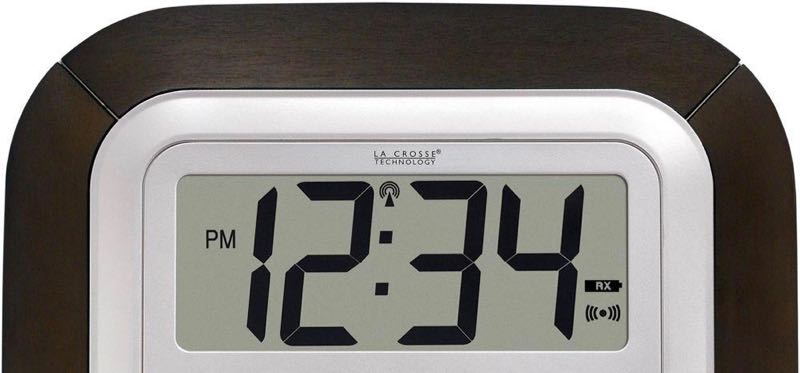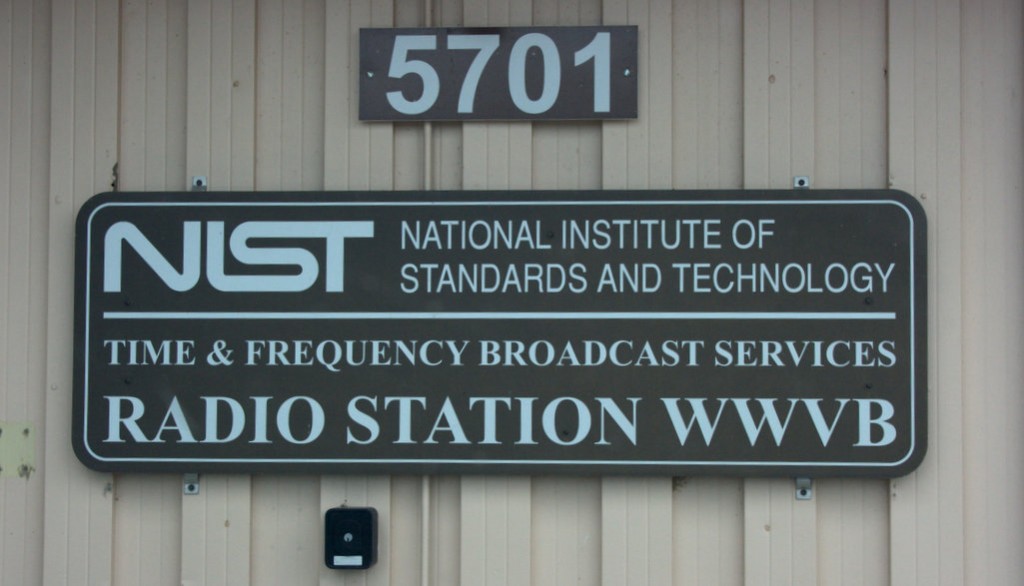Do you have a self-setting “atomic” clock or watch?
Yep, so do I. A number of them. In fact, although I’m a tech geek of a sort, I don’t even know how many of my standard, everyday devices––devices I rely on every day––fall into this category…But I may find out soon.
Many of us own self-setting clocks known as “atomic” clocks. Indeed, a large portion of wall clocks, alarm clocks, and watches, not to mention weather stations, cameras, and potentially a number of other devices, have a built-in receiver that self-calibrates. And all of these sync to a radio station you use more than any other, yet likely have never heard of: NIST Time Signal Station WWVB in Fort Collins, Colorado.
Here’s the issue: WWVB, the atomic clock time signal station that synchronizes time devices, may be shut down next year if a presidential budget request passes as proposed.
WWVB is a time station operated by the National Institute of Standards and Technology (NIST) which derives its time from a system of atomic clocks with frequency uncertainty of less than 1 part in 1012.
Translation: How accurate is this time signal? Crazily, insanely accurate.
And that’s a good thing, as so many of the things we rely on all the time (and often take for granted) rely on it. WWVB provides a continuous 60 kHz carrier wave that, among other things, is employed by self-setting “atomic” clocks used by consumers and industry. WWVB receivers are embedded in so many consumer appliances from cameras to irrigation controllers, these devices depend upon the very accurate timing the station imparts.
Per the NIST:
For huge numbers of people in North America who spend their days in schools, offices, stores, factories and public facilities, the time of their lives comes from clocks controlled by a single radio station that few people have ever heard: WWVB in Ft. Collins, Colorado, operated by PML’s Time and Frequency Division.
According to the latest estimates, there are at least 50 million radio-controlled clocks in operation (and another few million wristwatches) all receiving accurate time from WWVB’s 60 kHz broadcast—and approximately a million new commercial radio-controlled products are sold each year.[…]
Regular readers of the SWLing Post are already aware that the NIST Fiscal Year 2019 Presidential Budget Request includes a call to shutdown WWVB and two shortwave radio NIST time stations, WWV and WWVH.
What happens if WWVB is shut down?
If the budget is passed as proposed, after WWVB is closed your atomic clock synchronized devices will no longer be accurate, nor will they automatically be able to toggle the time between Standard to Daylight Savings Time.
They’ll continue to operate, albeit without a self-setting function…thus eventually leading, in the words of Thomas the tank engine’s ubiquitous station master, Sir Topham Hatt, to “confusion and delays.”
And, unfortunately, should the closure occur, there may not even be any public announcement to that effect.
But what does this have to do with us?
 These devices are so embedded in our lives here in North America, we scarcely notice them, and many consumers likely assume they’re set by the Internet.
These devices are so embedded in our lives here in North America, we scarcely notice them, and many consumers likely assume they’re set by the Internet.
They’re just an overlooked part of our lives that help keep us ticking––quite literally. Until a shutdown happens, we won’t know how many of the millions of devices that we rely upon will be affected. While there may be (arguably lesser) alternatives to this station’s time-setting provision, such as those provided by the Navy and the Internet, we will be without the one we rely upon most for accuracy.
The bottom line…
Something that belongs to all of us, and that we all rely upon to help us keep accurate time, may soon be taken away. If you feel strongly about keeping the atomic clock signal on the air, I urge you to contact your local representatives,and sign this White House petition.
Otherwise? Time will tell. Or not, as the case may be.




I have a self-setting clock and now it’s off. I found your article trying to figure out if the station was offline. Today is 11/23/2025. My clock shows Friday 05/11/2001 and of course, the time is off. The confusing part is that it has a signal Strength meter with one bar, which is normal. It has a temperature sensor which now I guess is the only thing it’s good for.
Even though NIST WWVB is still alive and transmitting, it’s a failed tech for me. The signal is so weak that the only chance I have of getting my clock to synch up is to place it on the sill of an open window facing toward Ft. Collins, which is nowhere near the spot I need this clock to be for my use. If I place the clock where I need it, forget it. It never synchronizes. It’s a joke.
For some reason my clocks are receiving a very strong wwvb signal and is accurate. Please advise.
Hi, Christian, This article dates from August, 2018. Later that year, the NIST internally allocated funds so that WWV, WWVH and WWVB would all remain on the air. That’s why your clocks are working as they should (you would have to set them yourself if WWVB was no longer transmitting).
Since then, NIST radio stations have been funded, but I imagine the budgeting issue will come up again.
Where do I send for repair?
This administration and congress are destroying this country. Shame on us for letting them get away with it.
GPS is used in a lot if not all industrial timing applications and could be an option for the future should WWVB get shut down. Even though GPS chips have become very inexpensive, nobody needs the extra cost of having to replace all their time devices.
This isn’t true. GPS can’t get inside most buildings. Industrial timing relies on network time for networked devices, GPS for outdoor devices, and WWVB for everything else. GPS is not a suitable replacement. 2.4GHz signals don’t penetrate walls the way 60Hz does. Even cellular networks don’t rely on signals above 1.9GHz. The majority of new deployment has been 600MHz and 800MHz. 60Hz gets just about everywhere.
60 kHz!!!
Good info Jeff
Excellent piece, and wonderful interview on Scott Simon’s “Weekend Edition Saturday” today!
Many Thanks!
I have four “atomic” clocks and watches which depend on WWVB. Reliable and independent availability direct from the official US Time and Frequency Standard is an invaluable governemnt function!
I use WWV and WWVH almost daily for evaluating shortwave radio propagation. I also use it monthly to set electronic clocks that don’t meet quartz clock specifications. I use WWV to set quartz clocks once a year. I don’t want to lose this service. I have signed the White House petition and have written to my legislators. Who else will do this job? AT&T, for a fee?
In the event the present incompetents hang on to power past the november election i hope someone in Canada will propose taking up the slack. Maybe they can even get the old NISt clocks and transmitters. CHU does have its own digital signal on shortwave but that doesnt help the thousands of clocks out there now.
There is value in considering how much political strength this budget has–virtually none. Essentially, this budget is the executive branch telling congress “Here’s what we’re thinking”. Why shouldn’t this be fought? Mostly because it would weaken a fight against the real policy if it should come up in congress. If attention is divided between the real policy and this suggestion, the part of the fight that will really decide NIST’s budget may be lost.
In addition, I would focus the largest part of any discussion on WWVB, rather than WWV or WWVH. If those shortwave stations are mentioned prominently, it may convince some people who are unfamiliar with both that those signals are all that NIST’s radio budget serves. I see few reasons to keep those on air, and I am rather confident that those proposing closing them see even fewer. WWVB, on the other hand, has clear value and deserves most, if not all, of the attention.
Also, I believe there is an error in the article. It says that WWVB is run by the “National Institute of Standards and Time”, but NIST stands for the “National Institute of Standards and Technology”.
Thanks for pointing out the error. I’ve now corrected this. – Thomas
Don’t shut it down, find the money somewhere!
This great article should really be on the big American news outlet sites! Not too technical (or should I say “dumbed down just the right way”?), addressing people the right way, a certain wit embedded… excellent material for a good newspaper too!
I would think the companies that make all these devices that use WWVB would be scrambling to work out a solution or else their products will not work as intended.
Yep
I was in an establishment yesterday that had at least a dozen SkyScan analog clocks, and yes, they all seemed perfectly synchronized. I noticed that since I read the articles about the possible NIST radio shutdown. I have at least two digital self-setting alarm clocks that use WWVB at home. I’m sure these situations are not unique. Sign the petition, everyone!
I’m getting used to some of the craziness coming out of the United States, but it still boggles the mind that it’s leaders don’t want to fund something as fundamental as a time signal to keep devices synchronised correctly.
The congress can’t agree on the time of day figuratively and now … literally.
I wonder if the individuals who are urging closure of these time signal stations are even aware that many clocks are linked to them for accuracy. Surely other commercial industries also rely on NIST for reliable calibration of timers and other industrial equipment. Sounds like this proposal was not well thought out.
I think sending this excellent article to our representatives would be an additional step we should do. Most of them don’t realize that the time signals are used by most everyone including themselves.